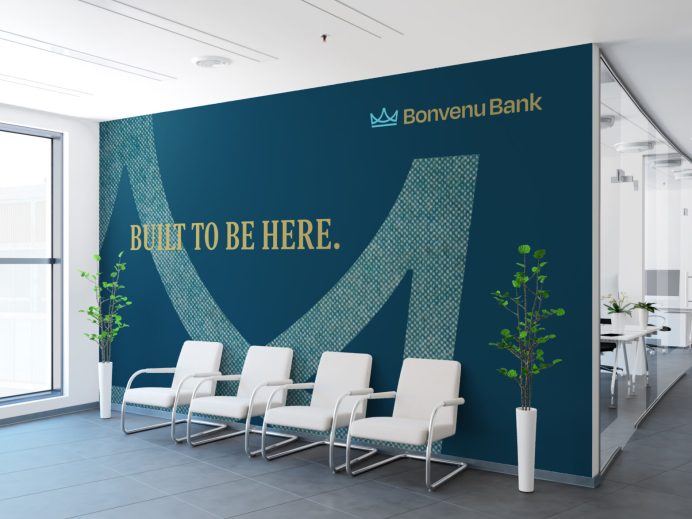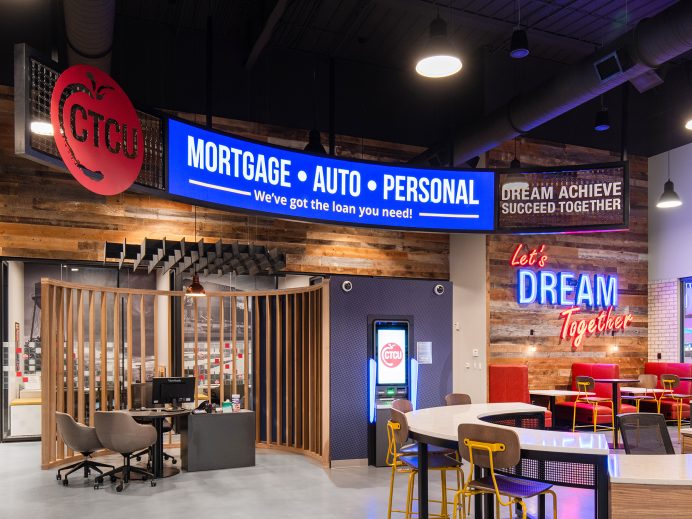With the rise of North American banking, where financial institutions coordinate efforts across both Canada and the U.S., people may assume that banking is the same on both sides of the border. And for the most part that’s true. However, there are some key ways that each country’s approach to banking diverge. From Canada’s embrace of open banking to institutions’ sustainability efforts, the Canadian banking sector leads the U.S. in some notable ways. Likewise, with such a robust community banking sector in the U.S., Canada is looking at their neighbor to the South for expansion opportunities to amplify their North American banking presence.
To learn more about the similarities and differences in banking both north and south of the border, we sat down with Adrenaline’s Lisa Lama, Group Account Director for Adrenaline Toronto.
Can you give us a snapshot of the Canadian banking landscape and how it plays out in people’s lives?
Generally speaking, most people have some sort of association with one of the big banks – TD Bank, Royal Bank of Canada, Bank of Montreal, Bank of Nova Scotia, CIBC, and National Bank, which is smaller, but on the rise. While most Canadians deal with one of the major banks in some capacity – whether it be a savings account, a credit card or a mortgage – there are a lot of credit unions and smaller financial institutions available to them to fill their niche needs. So, most people have a big bank relationship and then supplement with companies like HSBC, Alterna Bank or other direct banks or credit unions, based on what they’re looking to do.
I find that most people are pretty loyal to their bank, until a life change happens. When it’s time to go to get a mortgage or get married and combine assets, people will take that time to make a change. Just like in the U.S., most banks want to foster a lifelong relationship with customers. In my discussions with banking leaders, they all say they want to catch customers when they’re young and hold onto them as they hit major milestones throughout their lives.
Being a source of financial guidance through life changes like getting that first job, graduating from school, building credit, having children, etc., helps to build brand loyalty between consumers and their financial institutions. That’s understandable since Gen Z makes up 20% of the population and is increasing their influence on the economy every day. This younger generation is also more committed to the branch than one might think.
What are some of the Canadian banks’ biggest challenges? And how are they addressing those?
Much like in the U.S., I think banks in Canada are trying to distinguish themselves from their competition with experiences at the branch. Some of them are doing it using a hospitality model – making their branch designs more kid-friendly and even pet-friendly and providing a comfortable and casual place for families to gather while they get financial advice. It’s also not unusual to see coffee bars, communal workspaces and other customized amenities, especially as the branch design moves away from transactions and more toward interactions. Some cool new Canadian approaches in banking include experience centres and immersive digital in retail spaces.
Another interesting thing that you see in both the U.S. and Canada is that everyone thought branch traffic was going to go down and stay down post-pandemic. That’s not what we’re seeing. Through our research and conversations with bank executives, we’ve learned that branch foot traffic is basically at pre-pandemic levels. We see a lot of people inside the branch, and they aren’t there to just do short transactions, but sit with bankers for longer consultations. There are more collaborative spaces and advice centers. We’re also seeing banks doing more hoteling, moving staff between worksites, so there’s a rise in flagship buildings and office towers.
There are obviously some core similarities in Canadian and U.S. banking and financial services, more generally, but what are some of the differences?
One of the themes in the U.S. and Canada is the need for new opportunities, and the way financial institutions get growth is with M&A. The mergers in Canada are primarily between community financial institutions, like credit unions, since we do have the big banks dominating much of the banking landscape. While we may not have community banks merging like the U.S., one highly-anticipated major acquisition on the books is RBC’s purchase of HSBC. Another Canadian phenomenon to note is the number of snowbirds – citizens traveling South in the winter. Many Canadian banks are expanding into the U.S. to appeal to people who travel back and forth between the two countries. We also see Canadian banks using data to analyze the best opportunity markets to expand to.
On the consumer side, I think there are things like tap-to-pay that are a lot more omnipresent in Canada than in the U.S. I’ve noticed in traveling between the two countries that restaurants in the U.S. are still using paper receipts, whereas in Canada, they bring out the tap terminal for payments. Another big difference is in cash. In Canada, we don’t use a lot of cash for purchases. COVID pushed that forward even more. And our currency is different, too. Our smaller denomination currency, like our $1 and $2, are in the form of coins. The smallest bill you can get is $5. We also don’t have pennies. Our government phased those out a decade ago.
For more information on Canadian banking and expansion opportunities or to speak with one of our North American banking experts, contact Adrenaline today. Be sure to also stay tuned in to Believe in Banking as it highlights industry news and views for banking leaders in the U.S. and Canada.
Adrenaline is an end-to-end brand experience company serving the financial industry. We move brands and businesses ahead by delivering on every aspect of their experience across digital and physical channels, from strategy through implementation. Our multi-disciplinary team works with leadership to advise on purpose, position, culture, and retail growth strategies. We create brands people love and engage audiences from employees to customers with story-led design and insights-driven marketing; and we design and build transformative brand experiences across branch networks, leading the construction and implementation of physical spaces that drive business advantage and make the brand experience real.




